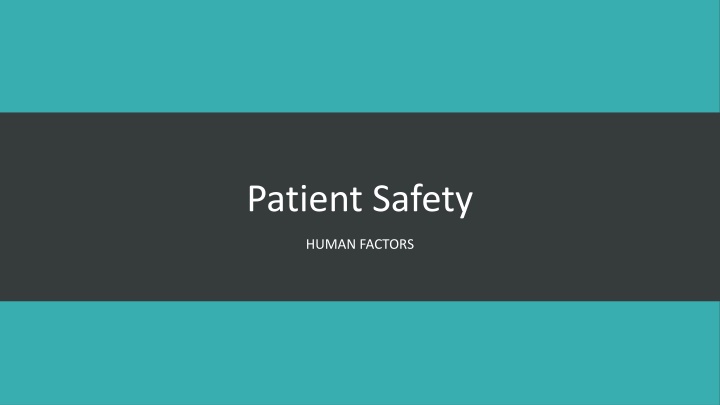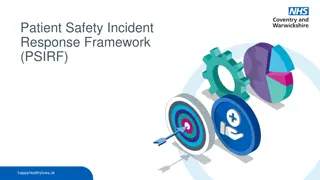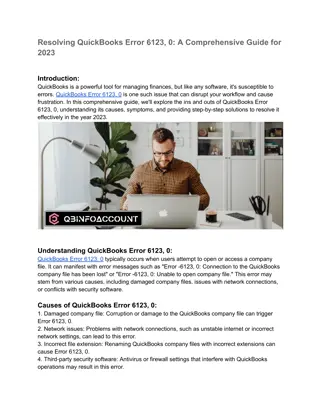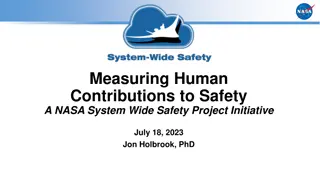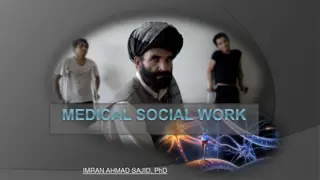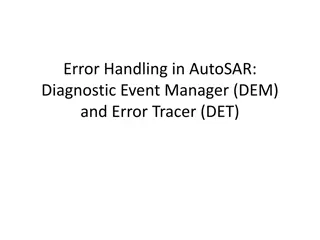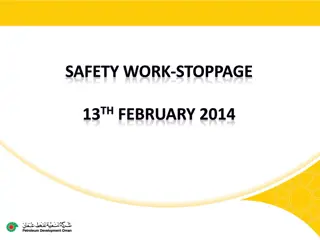Patient Safety and Human Factors: Lessons Learned from a Tragic Medical Error
In a heartbreaking case, Gabriel, a 20-month-old baby, tragically passed away at a hospital due to a misdiagnosis and a chain of errors. The incident underscores the importance of human factors in healthcare, such as staff education on equipment operation and transparency in handling mistakes. The need for swift action in response to medical errors is crucial to prevent similar tragedies in the future.
Download Presentation

Please find below an Image/Link to download the presentation.
The content on the website is provided AS IS for your information and personal use only. It may not be sold, licensed, or shared on other websites without obtaining consent from the author.If you encounter any issues during the download, it is possible that the publisher has removed the file from their server.
You are allowed to download the files provided on this website for personal or commercial use, subject to the condition that they are used lawfully. All files are the property of their respective owners.
The content on the website is provided AS IS for your information and personal use only. It may not be sold, licensed, or shared on other websites without obtaining consent from the author.
E N D
Presentation Transcript
Patient Safety HUMAN FACTORS
Group members : Group leader: Mohammad Almutlaq Faisal Alfawaz Basheer Alotaibi Mohammed Bin Naseef Mohammed Alayed Abdulrahman Almalki Abdullah Alotaibi Ahmed Alsalloum Abdullatif Alabdullatif Omar Qattan Waleed Aljamal
Transparency, Compassion and Truth in Medical Errors Video Link: https:/youtu.be/qmaY9DEzBzl
Summary of the case First of all Leilani Schweitzer has a baby called Gabriel. He is 20 months old. Gabriel was admitted to a local hospital and they misdiagnosed him. Then he got sick one day but this time his mother took him to a university hospital for children. At that night the doctors put wires on his chest to monitor his breathing and heart beat. So when there is a little change in his value the alarms go off. Then the nurse saw how much the mother is tired. So out of compassion the nurse turns off the alarms in the room and she turned off the alarms in the nurse station and her pager as well. As a result when Gabriel s heart beating stopped there was complete silence and the mother didn t wake up until the room was filled with doctors and nurses and she heard cold blue . Finally, Gabriel died on the following day.
Human Factors - Really knowing your equipment Although the nurse knew exactly how to operate the monitor she didn t know the full effects of what she was doing How do we know this? Because it was said that she went through 7 screens to turn off all alarms but hadn t realized that it would also turn them off everywhere How to fix this problem/Human Factor? Better programs for teaching staff about the equipment ,not just how to operate them but the full effects of the use and the dangers that could arise from their actions
Human Factors - Transparency Transparency : Being open and honest when the unexpected happens . We can learn from our mistakes we can find the deadly system failures and we can act to fix them . Like when all the other hospitals using the same equipment were alerted to the vulnerability . Transparency in medicine will save us money and make us safer. Transparency is healing by finding the truth and it can take away the infection of guilt and doubt.
Human Factors - Taking Action to a Medical Error Taking action to a Medical error: When there is a medical error, an immediate action should be taken as a response. There are five action taken by the hospital in response to the medical error in this case. These are 1) Investigation 2) Explain 3) Take Responsibility 4) Apologize 5) Ask what else can be done Through these action future medical errors can be prevented by learning from those mistakes committed previously.
Summary of Lessons Learned As this tragic yet compelling story has shown us, avoidable medical errors have significant associated consequences including death. In fact, 15 million avoidable medical errors are committed in the United States every year. Due to these avoidable medical errors, 100,000 patients will die every year making avoidable medical errors the 8th leading cause of death in the United States. Some believe that disclosure, apology, compensation programs are the key to improving the culture of patient safety and overall quality of care But as the time goes by U.S. health care institutions develops and have begun promoting transparency to improve the safety of care. Their success will require a collective understanding of the importance of transparency as well as a strong commitment to openness. Institutions are today better positioned to foster a culture that balances accountability and addresses the emotional and legal concerns of patients and clinicians. Liability reforms can also help to better align incentives to facilitate transparency. Ultimately, no matter how daunting the task, shining a light on our errors shows the path to improvement.
